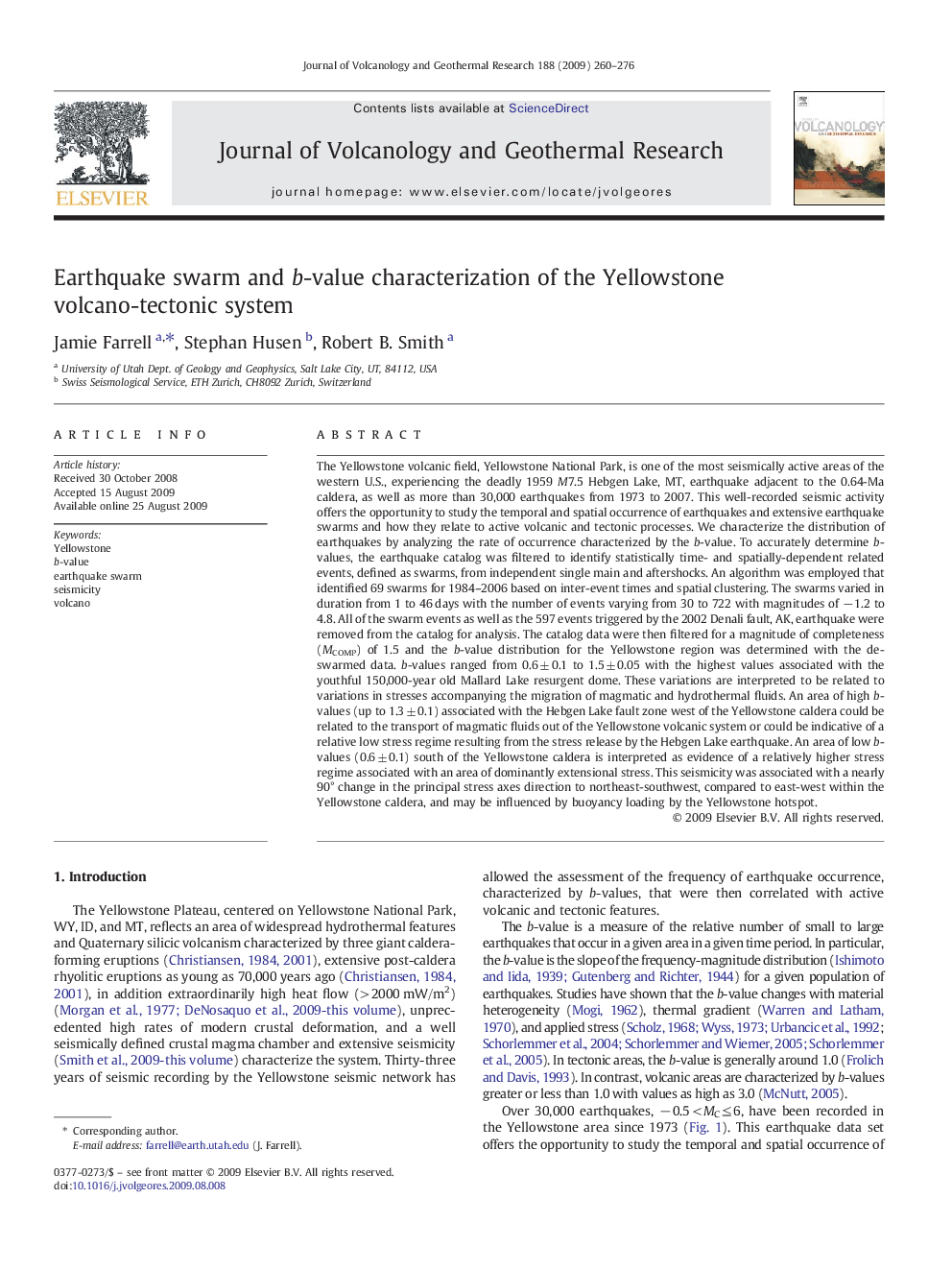| کد مقاله | کد نشریه | سال انتشار | مقاله انگلیسی | نسخه تمام متن |
|---|---|---|---|---|
| 4713185 | 1638428 | 2009 | 17 صفحه PDF | دانلود رایگان |

The Yellowstone volcanic field, Yellowstone National Park, is one of the most seismically active areas of the western U.S., experiencing the deadly 1959 M7.5 Hebgen Lake, MT, earthquake adjacent to the 0.64-Ma caldera, as well as more than 30,000 earthquakes from 1973 to 2007. This well-recorded seismic activity offers the opportunity to study the temporal and spatial occurrence of earthquakes and extensive earthquake swarms and how they relate to active volcanic and tectonic processes. We characterize the distribution of earthquakes by analyzing the rate of occurrence characterized by the b-value. To accurately determine b-values, the earthquake catalog was filtered to identify statistically time- and spatially-dependent related events, defined as swarms, from independent single main and aftershocks. An algorithm was employed that identified 69 swarms for 1984–2006 based on inter-event times and spatial clustering. The swarms varied in duration from 1 to 46 days with the number of events varying from 30 to 722 with magnitudes of − 1.2 to 4.8. All of the swarm events as well as the 597 events triggered by the 2002 Denali fault, AK, earthquake were removed from the catalog for analysis. The catalog data were then filtered for a magnitude of completeness (MCOMP) of 1.5 and the b-value distribution for the Yellowstone region was determined with the de-swarmed data. b-values ranged from 0.6 ± 0.1 to 1.5 ± 0.05 with the highest values associated with the youthful 150,000-year old Mallard Lake resurgent dome. These variations are interpreted to be related to variations in stresses accompanying the migration of magmatic and hydrothermal fluids. An area of high b-values (up to 1.3 ± 0.1) associated with the Hebgen Lake fault zone west of the Yellowstone caldera could be related to the transport of magmatic fluids out of the Yellowstone volcanic system or could be indicative of a relative low stress regime resulting from the stress release by the Hebgen Lake earthquake. An area of low b-values (0.6 ± 0.1) south of the Yellowstone caldera is interpreted as evidence of a relatively higher stress regime associated with an area of dominantly extensional stress. This seismicity was associated with a nearly 90° change in the principal stress axes direction to northeast-southwest, compared to east-west within the Yellowstone caldera, and may be influenced by buoyancy loading by the Yellowstone hotspot.
Journal: Journal of Volcanology and Geothermal Research - Volume 188, Issues 1–3, 20 November 2009, Pages 260–276